Monthly briefing: 20 key developments in the region
25 October 2022
By MEED staff
> Opec and its allies cut oil output
> Saipem wins $4.5bn North Field offshore gas contract
> Qatar to inaugurate 800MW solar farm
> Lebanon and Israel agree maritime border deal
> Aramco launches SME stimulator programme
> Region to be third-largest hydrogen source by 2050
> Egypt ready to supply natural gas to Lebanon
> Riyadh makes debt announcements
> Neom hydrogen project expected to close by year-end
> Abu Dhabi transfers ownership of Etihad Airways to ADQ
> Mipco secures $4bn to refinance Abu Dhabi plant
OIL OUTPUT CUTS
Opec+ to slash production from November to keep prices high
The Opec+ alliance of oil producers has decided to reduce oil production by 2 million barrels a day (b/d) from November to further shore up crude prices, which have fluctuated amid fears that a global recession could curb oil demand.
The decision, which was led by Saudi Arabia and Russia, was taken at a meeting of the group in Austria on 5 October.
The move represents a major reversal in production policy for Opec+, which slashed output by a record 10 million b/d in early 2020 when demand plummeted as a result of the Covid-19 pandemic. Since then, the group has gradually unwound those cuts. Read more
 Tight oil market increases unease for stakeholders
Tight oil market increases unease for stakeholders

The 33rd Opec and non-Opec ministerial meeting on 5 October. Credit: Opec
US FALLOUT
Saudi Arabia and UAE condemn US warning of ‘consequences’
Saudi Arabia and the UAE have rejected as baseless accusations that the Opec+ decision to reduce oil production from November was politically motivated against the US.
Riyadh has insisted decisions by Opec and its allies were taken “purely on economic considerations”, and said its economic advice had been to resist calls to delay the production cut.
The UAE issued a statement calling upon the US to refrain from “politicisation” of the Opec+ decision. US President Joe Biden had previously warned that there would be “consequences” for Saudi Arabia and the Opec+ members for their decision to cut oil output.
EGYPT
World leaders to gather for meeting on climate change
Leaders from almost 200 countries will meet in Sharm el-Sheikh, Egypt, on 6-18 November for the UN’s 27th Conference of the Parties (Cop 27) climate change summit.
Egypt’s International Cooperation Minister, Rania al-Mashat, has previously said that the focus of Cop 27 should be moving from “pledges to implementation”. The conference aims to deliver action on issues critical to tackling the climate emergency, from reducing greenhouse gas emissions, building resilience and adapting to the impacts of climate change, to delivering on the commitments to finance climate action in developing countries.
STEEL
Region could lead global steel decarbonisation efforts
As the global steel industry considers switching to direct reduced iron (DRI) production, the Middle East and North Africa (Mena) region is primed to start producing carbon-neutral steel, according to a report by the Institute for Energy Economics & Financial Analysis.
“The Mena region can lead the world if it shifts promptly to renewables and applies green hydrogen in its steel sector,” says Soroush Basirat, the author of the report.
“The region’s steel sector is dominated by direct reduced iron-electric arc furnace technology, which releases lower emissions than the … coal-fuelled blast furnace and basic oxygen furnace process used in 71 per cent of global crude steel production in 2021.”
The Mena region produced just 3 per cent of global crude steel last year, but accounted for nearly 46 per cent of the world’s DRI production.
Basirat adds: “Mena has an established supply of DR-grade iron ore and its iron ore pelletising plants are among the world’s largest.”
SAUDI ARABIA
Riyadh announces government spending increase in 2022-24
Saudi Arabia has announced increases in government spending in 2022-24 of more than 18 per cent, which is close to SR175bn ($47bn) or 4 to 4.5 per cent of GDP.
The rise in spending targets points to smaller fiscal surpluses in the coming years, according to Moody’s Investors Service.
Increased spending could contribute to reducing the kingdom’s economic reliance on hydrocarbons, provided the spending is successfully deployed to advance government-sponsored diversification projects.
 Saudi Arabia’s finances and ambition align
Saudi Arabia’s finances and ambition align
IRAQ
Prime minister-designate vows to act against corruption
Iraq’s prime minister-designate Mohammed Shia al-Sudani has pledged to take action against corruption after authorities announced that ID3.7tn ($2.5bn) had been embezzled from the General Tax Authority’s trust account held by a branch of Rafidain Bank.
The Iraqi Integrity Commission has said it is opening an investigation into the theft
On 13 October, Iraq’s parliament elected Abdul Latif Rashid as the country’s new president. He then tasked Al-Sudani with forming a new government to end a year of political gridlock.
Al-Sudani faces a challenge in the coming weeks as he attempts to appoint a new cabinet of ministers. Members of the Iraqi political bloc led by Shiite cleric Moqtada al-Sadr have said that they will not join the new government.
YEMEN
Houthi rebels attack oil terminal in southern Yemen
Iran-backed Houthi rebels have claimed responsibility for an attack on a cargo ship at an oil terminal in the south of the country on 21 October. The group said the attack by explosives-laden drones was meant to prevent pro-government forces from using the Al-Dhabba terminal for oil exports.
The incident occurred in Ash-Shihr in the Hadramawt governorate, and targeted the Marshall Islands-flagged tanker Nissos Kea. The Greek owners of the tanker said it was undamaged.
The internationally recognised government of Yemen said that its forces had intercepted armed drones launched against the Al-Dhabba oil terminal.
UN special envoy for Yemen, Hans Grundberg, called the attack a “deeply worrying military escalation”. The Yemeni government sent a letter to the UN Security Council regarding the “threat to disrupt international maritime navigation and target ships and oil infrastructures”.
The attack was the first military action announced by the Houthis since a truce between Yemen’s warring sides expired on 2 October.
LEBANON-ISRAEL
Lebanon and Israel reach maritime border deal
Lebanon and Israel have forged a deal to end a long-running maritime border dispute in the gas-rich Mediterranean Sea. Lebanon’s deputy speaker Elias Bou Saab said that an agreement had been reached that satisfies both sides.
It is hoped that the new deal will resolve the two countries’ dispute over a swathe of territory in the Mediterranean Sea in an area where Lebanon aims to explore for natural gas, and near waters where Israel has already found commercially viable quantities of hydrocarbons. Read more
GCC
Region faces green hydrogen production challenges
GCC governments including Oman, Saudi Arabia and the UAE are developing zero-carbon green hydrogen and low-carbon blue hydrogen schemes. However, achieving large-scale production, especially of green hydrogen, will be challenging in the coming years, according to Moody’s Investors Service.
While both green and blue hydrogen will play a role in reducing the global carbon footprint, only green hydrogen has the potential to reduce the reliance of GCC countries on hydrocarbons, but this will take several years, Moody’s says.
In the short to medium term, GCC countries’ access to cheap domestic natural gas, their carbon capture and storage expertise, and the limited availability of infrastructure make blue hydrogen production a more viable option than the more expensive and challenging production of green hydrogen.
 Region to be third-largest hydrogen source by 2050
Region to be third-largest hydrogen source by 2050
Exclusive from Meed
-
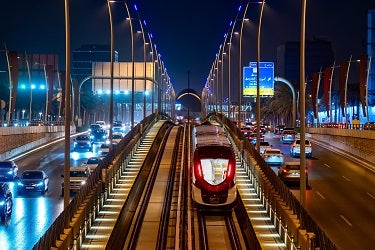
-
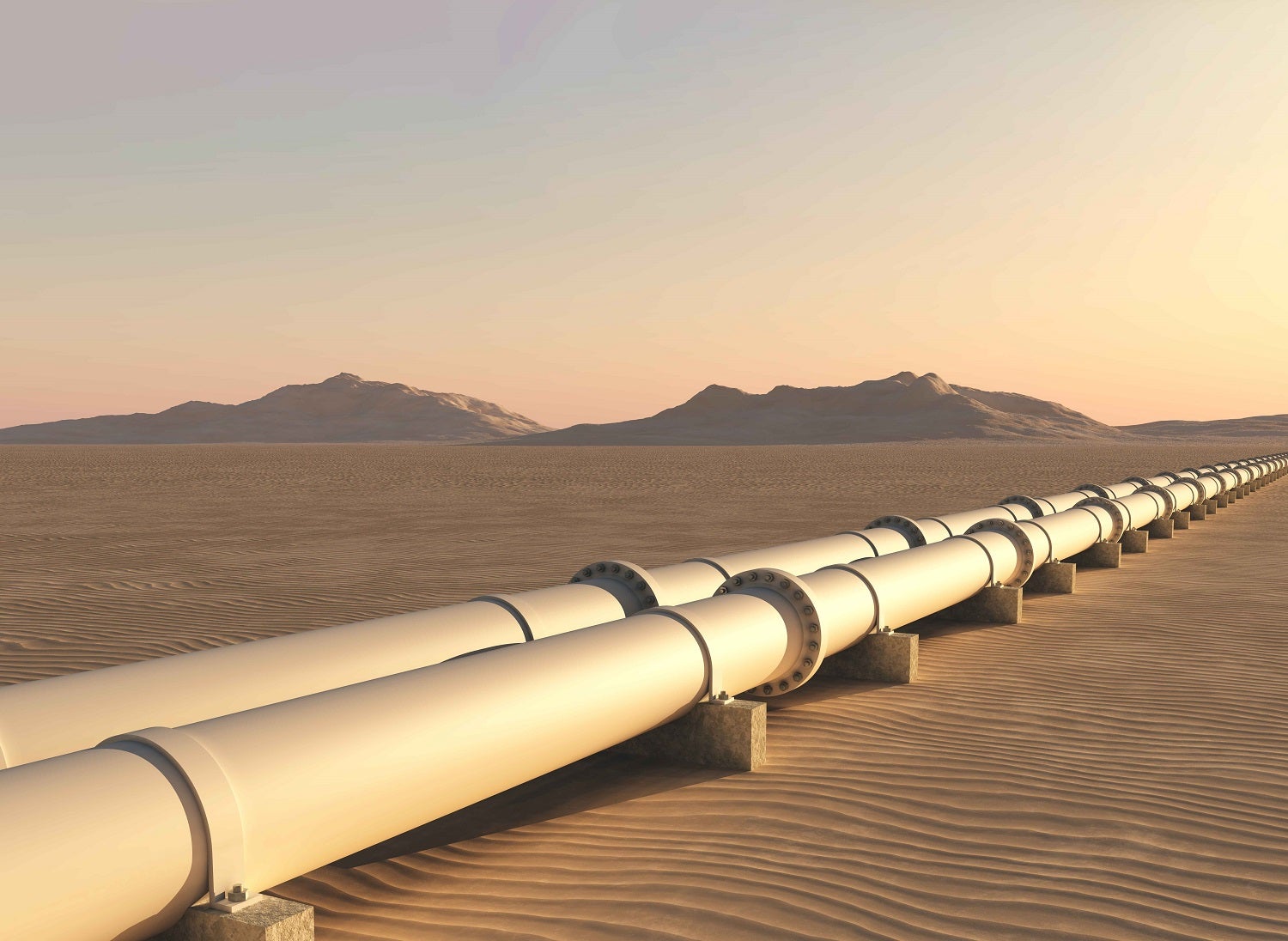
-
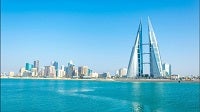 Bahrain and US sign nuclear energy agreement
Bahrain and US sign nuclear energy agreement17 July 2025
-
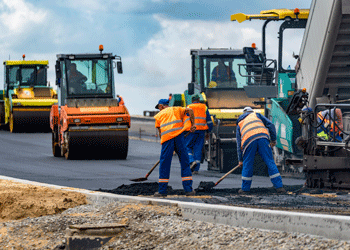 Kuwaiti firm wins $53m Duqm coastal road contract
Kuwaiti firm wins $53m Duqm coastal road contract17 July 2025
-
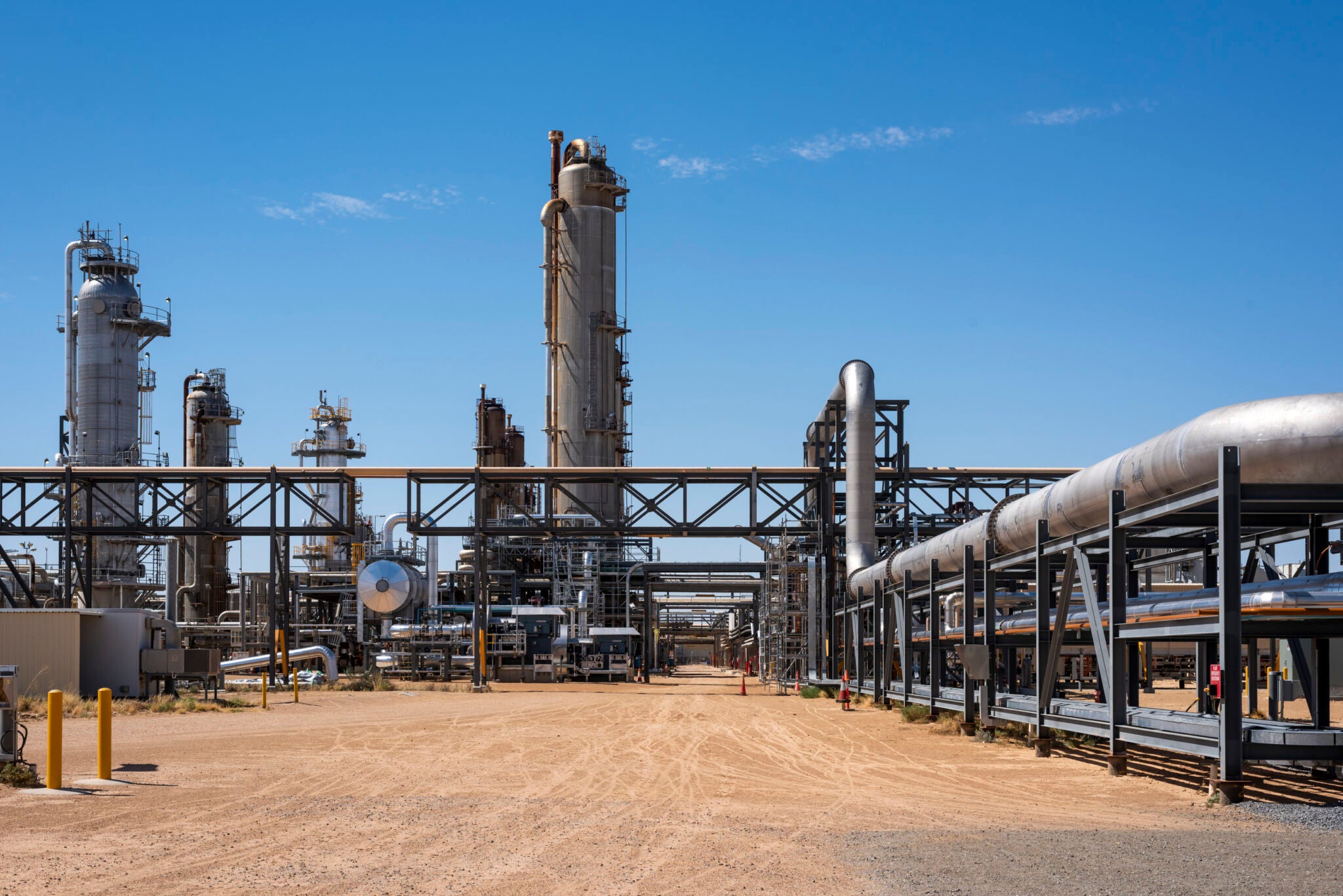
All of this is only 1% of what MEED.com has to offer
Subscribe now and unlock all the 153,671 articles on MEED.com
- All the latest news, data, and market intelligence across MENA at your fingerprints
- First-hand updates and inside information on projects, clients and competitors that matter to you
- 20 years' archive of information, data, and news for you to access at your convenience
- Strategize to succeed and minimise risks with timely analysis of current and future market trends
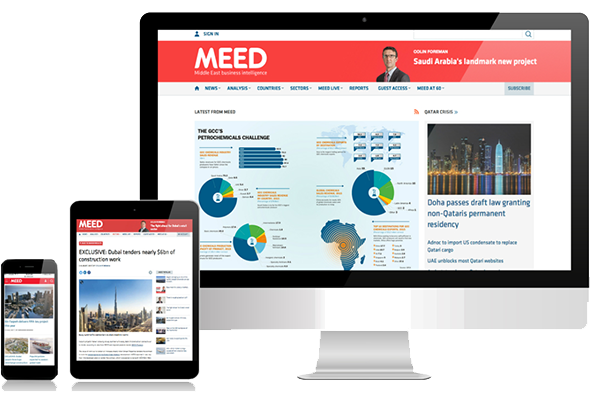
Related Articles
-
 Riyadh Royal Commission awards metro Line 2 extension
Riyadh Royal Commission awards metro Line 2 extension18 July 2025

Register for MEED’s 14-day trial access
Saudi Arabia’s Royal Commission for Riyadh City (RCRC) has awarded an estimated $800m-$900m contract to build the next phase of the Riyadh Metro project, which is the Line 2 extension.
The contract was awarded to the Arriyadh New Mobility Consortium.
The Line 2 extension is 8.4 kilometres (km) long, of which 1.3km is elevated and 7.1km is underground. It includes five stations – two elevated and three underground.
It will run from where Line 2 currently ends at King Saud University (KSU) and then travel onwards to new stations at KSU Medical City, KSU West, Diriyah East, Diriyah Central, where it interchanges with the planned Line 7, and then finally to Diriyah South.
According to the consortium’s official website, the consortium members include Italy’s Webuild, India’s Larsen & Toubro, locally based Nesma & Partners, Japan’s Hitachi, Italy’s Ansaldo STS, the Canadian firm Bombardier, Spain’s Idom and WorleyParsons from Australia.
In 2013, the Arriyadh New Mobility Consortium secured Riyadh Metro’s Line 3 project for $5.21bn.
Line 3, also known as the Orange Line, stretches from east to west, from Jeddah Road to the Second Eastern Ring Road, covering a total distance of 41km.
Riyadh Metro
Riyadh Metro’s first phase features six lines with 84 stations.
The RCRC completed the phased rollout of the Riyadh Metro network when it started operating the Orange Line on 5 January.
In December last year, the RCRC started operating the Red Line and Green Line.
The Red Line, also known as Line 2, stretches 25.1km from the east of Riyadh to the west, via King Abdullah Road, connecting King Fahd Sports City and King Saud University. It has a total of 15 stations.
The Green Line, also known as Line 5, extends 13.3km from King Abdullah Road to the National Museum. With 12 stations, it serves several ministries and government agencies, including the Defence Ministry, the Finance Ministry and the Commerce Ministry, as well as other areas.
Earlier in December, the RCRC started operating the Blue Line (Line 1), Yellow Line (Line 4) and Purple Line (Line 6).
The Blue Line connects Olaya Street to Batha; the Yellow Line runs along King Khalid International Airport Road; while the Purple Line connects Abdul Rahman Bin Awf Road with Al-Sheikh Hassan Bin Hussain Road.
King Salman Bin Abdulaziz Al-Saud inaugurated the Riyadh Metro on 27 November last year.
The network spans 176km. Four of the stations have been designed by signature architects.
The metro is part of the Riyadh Public Transport Project, which encompasses metro and bus systems. The project aims to relieve traffic congestion.
The $23bn project was scheduled to open in 2018, but construction activity slowed due to disputes over prolongation and the disruption caused by the Covid-19 pandemic.
The RCRC awarded the main construction packages for the scheme on 28 July 2013.
In November 2022, the RCRC struck a deal with three contracting consortiums working on the Riyadh Metro scheme regarding the completion of the project’s remaining works.
The Fast consortium won lines 4, 5 and 6, reportedly valued at $7.82bn. The Bacs consortium was awarded lines 1 and 2 for $9.45bn, while Arriyadh New Mobility secured Line 3 for $5.21bn.
US firm Bechtel leads the Bacs consortium. Italian firm Ansaldo STS is the leader of the Arriyadh New Mobility group, and Spanish firm FCC Construccion heads the Fast consortium.
AtkinsRealis has delivered programme management and supervision services for the operations and maintenance of the Riyadh Metro scheme.
https://image.digitalinsightresearch.in/uploads/NewsArticle/14289337/main.jpg -
 Firms submit bids for Maaden gold project water pipeline
Firms submit bids for Maaden gold project water pipeline17 July 2025

Saudi Arabian Mining Company (Maaden) has received proposals from local firms for a water pipeline network it plans to build as part of a larger project to develop a new gold mining and processing facility in the Al-Rjum region of the kingdom.
The Al-Rjum gold mining and processing facility, located in Medina province, is expected to be commissioned by the end of 2027. It will become the largest gold mining operation in Saudi Arabia when operational.
According to sources, the pipeline is to be developed using a build-own-operate-transfer (BOOT) model. The engineering, procurement and construction (EPC) works will have a duration of 38 months, followed by a 20-year operations and maintenance period.
Lamar Holding and Alkhorayef are understood to be the only bidders for the proposed Taif to Al-Rjum water pipeline, which forms package B of the Maaden gold mining project.
The two contractors submitted bids for the water pipeline project on 1 July, sources told MEED.
The main scope of work involves building a 150-kilometre pipeline that will supply treated sewage effluent water to the Al-Rjum gold mining facility.
ALSO READ: Saudi Arabia issues mining exploration licences
The Al-Rjum gold mining and processing facility will have an output capacity of 250,000 ounces of gold a year. The project will increase Maaden’s total gold production to 700,000 ounces a year by 2028, helping the company support Saudi Arabia’s overall goal of doubling gold production by 2030 and achieving a four-fold increase in output by 2040.
MEED recently reported that Maaden had received bids for a tender to develop accommodation facilities for over 4,500 of its workers at the upcoming Al-Rjum gold mining and processing facility.
Bids for the Al-Rjum worker accommodation tender, which is also under the BOOT model, were submitted in late June. The operations and maintenance period for this contract is 15 years.
ALSO READ: Saudi Arabia and Oman open up their minerals potential
https://image.digitalinsightresearch.in/uploads/NewsArticle/14284263/main3503.jpg -
 Bahrain and US sign nuclear energy agreement
Bahrain and US sign nuclear energy agreement17 July 2025
Bahrain and the US have signed a cooperation agreement covering the field of peaceful nuclear energy.
The agreement aims to enhance collaboration in nuclear energy, recognising its vital role in sustainable development and energy security. It aligns with Bahrain's ambitious goal of achieving carbon neutrality by 2060 and contributes to global efforts to combat climate change.
As Bahrain explores alternative energy sources, senior officials have previously indicated to MEED that they are closely monitoring developments in small modular reactor (SMR) technology. This is particularly crucial for Bahrain, where limited land availability poses challenges for solar energy projects. Floating solar plants have been identified as a potential solution, but the exploration of nuclear energy and SMRs remains a priority for future energy diversification.
The agreement was signed during an official visit to the US by Prince Salman Bin Hamad Al-Khalifa, the crown prince and prime minister of Bahrain.
The agreement was formalised by Abdullatif Bin Rashid Al-Zayani, Bahrain’s minister of foreign affairs, and Marco Rubio, the US secretary of state.
Al-Zayani added that the agreement builds upon the Comprehensive Security Integration and Prosperity Agreement (C-SIPA) signed in 2023. The agreement aims to strengthen cooperation in defence, security, emerging technologies, trade and investment.
 READ THE JULY 2025 MEED BUSINESS REVIEW – click here to view PDF
READ THE JULY 2025 MEED BUSINESS REVIEW – click here to view PDFUAE and Turkiye expand business links; Renewed hope lies on the horizon for trouble-beset Levant region; Gulf real estate momentum continues even as concerns emerge
Distributed to senior decision-makers in the region and around the world, the July 2025 edition of MEED Business Review includes:
> AGENDA: UAE-Turkiye trade gains momentum> INTERVIEW 1: Building on UAE-Turkiye trade> INTERVIEW 2: Turkiye's Kalyon goes global> INTERVIEW 3: Strengthening UAE-Turkiye financial links> INTERVIEW 4: Turkish Airlines plans further growth> CURRENT AFFAIRS: Middle East tensions could reduce gas investments> GCC REAL ESTATE: Gulf real estate faces a more nuanced reality> PROJECTS MARKET: GCC projects market collapses> INTERVIEW 5: Hassan Allam eyes role in Saudi Arabia’s transformation> INTERVIEW 6: Aseer region seeks new investments for Saudi Arabia> LEADERSHIP: Nuclear power makes a global comeback> LEVANT MARKET FOCUS: Levant states wrestle regional pressures> GULF PROJECTS INDEX: Gulf projects index continues climb> CONTRACT AWARDS: Mena contract award activity remains subdued> ECONOMIC DATA: Data drives regional projects> OPINION: A farcical tragedy that no one can endTo see previous issues of MEED Business Review, please click herehttps://image.digitalinsightresearch.in/uploads/NewsArticle/14281751/main.jpeg -
 Kuwaiti firm wins $53m Duqm coastal road contract
Kuwaiti firm wins $53m Duqm coastal road contract17 July 2025
Kuwaiti contractor Combined Group Contracting Company (CGCC) has won a RO20.6m ($53m) contract to construct coastal roads in Duqm.The scope of work covers the construction of roads with a total length of 14 kilometres, including a coastal road, a proposed service road, an extension to an existing service road, a resort street, four roundabouts, future extensions and proposed links.
The contract duration is two years from the start date of construction.
MEED reported in August 2023 that CGCC had emerged as the lowest bidder for the project.
GlobalData estimates that the construction industry in Oman will grow by 3.6% in real terms in 2025, supported by rising foreign direct investment (FDI) in the country, particularly in the manufacturing sector, as well as investment in the energy and transport sectors.
The infrastructure construction sector is estimated to grow by 5.7% in 2025, before recording an annual average growth of 5.2% between 2026 and 2029, supported by the government’s investment in upgrading road and airport infrastructure.
CGCC’s contract win in Oman comes shortly after a key contract win in the UAE, worth AED685m ($186m).
The scope of work under this contract encompasses the upgrade works on Emirates Road, from the Al-Badea intersection in Sharjah to the E55 intersection in Dubai.
The UAE’s Ministry of Energy & Infrastructure is the project client.
The contract duration is 25 months.
 READ THE JULY 2025 MEED BUSINESS REVIEW – click here to view PDF
READ THE JULY 2025 MEED BUSINESS REVIEW – click here to view PDFUAE and Turkiye expand business links; Renewed hope lies on the horizon for trouble-beset Levant region; Gulf real estate momentum continues even as concerns emerge
Distributed to senior decision-makers in the region and around the world, the July 2025 edition of MEED Business Review includes:
> AGENDA: UAE-Turkiye trade gains momentum> INTERVIEW 1: Building on UAE-Turkiye trade> INTERVIEW 2: Turkiye's Kalyon goes global> INTERVIEW 3: Strengthening UAE-Turkiye financial links> INTERVIEW 4: Turkish Airlines plans further growth> CURRENT AFFAIRS: Middle East tensions could reduce gas investments> GCC REAL ESTATE: Gulf real estate faces a more nuanced reality> PROJECTS MARKET: GCC projects market collapses> INTERVIEW 5: Hassan Allam eyes role in Saudi Arabia’s transformation> INTERVIEW 6: Aseer region seeks new investments for Saudi Arabia> LEADERSHIP: Nuclear power makes a global comeback> LEVANT MARKET FOCUS: Levant states wrestle regional pressures> GULF PROJECTS INDEX: Gulf projects index continues climb> CONTRACT AWARDS: Mena contract award activity remains subdued> ECONOMIC DATA: Data drives regional projects> OPINION: A farcical tragedy that no one can endTo see previous issues of MEED Business Review, please click herehttps://image.digitalinsightresearch.in/uploads/NewsArticle/14281451/main.gif -
 Algeria awards $855m contract for gas production project
Algeria awards $855m contract for gas production project17 July 2025
Register for MEED’s 14-day trial access
Algeria’s national oil and gas company Sonatrach has awarded an $855m contract to China’s Jereh Group for a project to develop facilities at the Rhourde Nouss gas field.
Jereh Group said that its subsidiary Jereh Oil & Gas Engineering will build a natural gas booster station in the Rhourde Nouss gas field and upgrade and renovate related transmission pipelines.
The Yantai-based company cited a letter of award from Sonatrach and said that the contract will boost the company's footprint in North Africa’s oil and gas engineering service sector.
The Rhourde Nouss boosting project will centralise the boosting of natural gas produced by the gas field and the adjacent Gassi Touil gas field, to improve their production efficiency and natural gas processing capacity, the company said.
Sonatrach, the largest gas producing company in Africa and the largest state-owned enterprise in Algeria, will pay $629.1m and $226m for the construction of the project, Jereh said.
Jereh's growing footprint
Jereh has been expanding overseas in recent years and has won contracts with major Middle Eastern oil and gas clients, including Saudi Aramco, Abu Dhabi National Oil Company (Adnoc) and Kuwait Petroleum Corporation.
In June 2021, the company was awarded a contract for the design, procurement and construction of a gas debottlenecking project in Algeria.
The project was located in the Bir Rebaa Nord and Rhourde Ouled Djemma fields, which are located in the eastern Algerian desert, about 300 kilometres southeast of Hessi Messaoud.
The client on that project was Groupement Sonatrach Eni, a joint venture of Sonatrach and Italian energy company Eni.
 READ THE JULY 2025 MEED BUSINESS REVIEW – click here to view PDF
READ THE JULY 2025 MEED BUSINESS REVIEW – click here to view PDFUAE and Turkiye expand business links; Renewed hope lies on the horizon for trouble-beset Levant region; Gulf real estate momentum continues even as concerns emerge
Distributed to senior decision-makers in the region and around the world, the July 2025 edition of MEED Business Review includes:
> AGENDA: UAE-Turkiye trade gains momentum> INTERVIEW 1: Building on UAE-Turkiye trade> INTERVIEW 2: Turkiye's Kalyon goes global> INTERVIEW 3: Strengthening UAE-Turkiye financial links> INTERVIEW 4: Turkish Airlines plans further growth> CURRENT AFFAIRS: Middle East tensions could reduce gas investments> GCC REAL ESTATE: Gulf real estate faces a more nuanced reality> PROJECTS MARKET: GCC projects market collapses> INTERVIEW 5: Hassan Allam eyes role in Saudi Arabia’s transformation> INTERVIEW 6: Aseer region seeks new investments for Saudi Arabia> LEADERSHIP: Nuclear power makes a global comeback> LEVANT MARKET FOCUS: Levant states wrestle regional pressures> GULF PROJECTS INDEX: Gulf projects index continues climb> CONTRACT AWARDS: Mena contract award activity remains subdued> ECONOMIC DATA: Data drives regional projects> OPINION: A farcical tragedy that no one can endTo see previous issues of MEED Business Review, please click herehttps://image.digitalinsightresearch.in/uploads/NewsArticle/14278458/main.jpg

